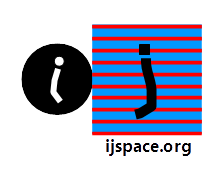Equivalence in j-space - I
30th July 2018
"The complex mapping that correspond to Lorentz transformations are the Möbius transformations! Conversely, every Möbius transformation of C yields a unique Lorentz transformation of space-time.
Even among professional physicists, this miracle is not as well known as it should be."
- Tristan Needham in Visual Complex Analysis.
"What we
hope is at some point we will see something in the
galactic centre that we can't explain with Einstein's
theory - that would be really, really exciting. Because
then we could go back to the drawing board and come up
with something better."
- Odele Straub
First let us set up the problem of measurement. A finite-capacity observer (v2/c2 << 1) ObsM, is in the state of measurement of an infinite source. We call this observer a macroscopic observer, for example human beings. In the j-space, the infinite source is defined as "a point containing infinite information" within itself 1.
Since in reality, all the information within the-point can never be precisely measured by ObsM, we also called the infinite information source as "indeterminate or i-space". The observer ObsM, can precisely measure only an infinitesimal portion of "indeterminate or i-space", called δi. The subscript i refers to the information measured from the i-space.
As the observer ObsM is in the state of measurement, δi essentially represents the universe (∞j) the macroscopic observer exists in, also called the j-space. We represent this rather annoying revelation as,
∞j = δi.
A bummer isn't
it? Here we are, fantasizing about the supremacy over
"others" by any means possible, yet what we
know including life, may not even be an
infinitesimal of what we really do not
know. An amoeba in q=2
space is probably more capable than the
whole universe combined in q=3 space.
For macroscopic observers, the information ∞j
or
δi,
can be represented by the unit-point sphere SU.
In the following figure SU
is being being measured by two observers who
are in relative motion with constant velocity,
with respect to each other. The
observers would be in disagreement with
respect to the time and the space
coordinates.
Assume that the time and the space coordinates
for Obs1 and Obs2 are (t1,
x1, y1, z1)
and (t2,
x2, y2, z2)
respectively. However the observers are
restricted by the requirement that maximum
velocity possible is c, which is the speed of
light.
The measurements
performed by both observers can be linearly
mapped into each other using Lorentz
transformations. The consequence, is
that they will have to agree that the
space-time interval Δs2
between two events as measured by either of
them, will be the same, i.e.
s2
= (c2Δt12
- Δx12
- Δy12
- Δz12)
= (c2Δt22
- Δx22
- Δy22
- Δz22).
Thus
if the observers are able to measure the
unit-point sphere completely, albeit their
descriptions of the events and how they occur
occur may be
different, their measurements must be
Lorentz Invariant i.e. Δs2does
not change for either of them2.
The Lorentz Invariance is required due to the
fact that time
and space are not linearly independent of each
other. The information gathered from the
same space point at different time instants is
not independent of each other, unless
assumed otherwise as in Newtonian
Mechanics. Similarly the information
gathered at two different space points at the
same time instant is not independent of each
other, unless
assumed otherwise as in Newtonian
Mechanics. (In
j-space the terms "events" and "information
gathered from measurements" are analogous.)
It is also worthwhile to note that the
independence of the space and time coordinates
occurs only when there is no memory of the
initial state <t = 0j>.
In this case the structures are represented by
the uniform distribution and
the macroscopic observer is allowed to start
and stop his or her measurement clock as
he or she wills. The uniform
distribution is not a stable
distribution.
As the memory of the
initial state is brought in to the picture, we
move towards stable distributions such as Gaussian, Cauchy and
Levy. In this case, the structures
are not governed by the measurement clock of
ObsM but that of ObsC
instead. (ObsM does not have
the memory of the initial state, ObsC does.)
In j-space the condition of Lorentz Invariance
is enforced by the measurements made by the
observer Obsc (v/c =1), the maximum
efficiency observer in q=3 state. We can
also say that the details of the universe as
measured by Obs1,
will be linearly correlated to the details of
the universe as measured by Obs2,
by Lorentz transformations. Please note
that the linear correlation between
the details of the universe in complex plane,
does not imply linear independence
of time and space coordinates as in Newtonian
mechanics.
Now
imagine that both observers are comparing
observations made at "the same instant" in the
j-space. What will be the relationship
between their measurements? One thing
for sure, is that the measurements must be
linearly correlated as the Lorentz Invariance
must still hold. Thus at a given instant
if two observers either stationary or moving
with a constant velocity with respect to
each other, make measurements then,
i) The Lorentz Invariance must be satisfied, and
ii) The
measurements at that instant are
correlated by the Möbius
Transformation in C.
Why Möbius
Transformation? Because Möbius
Transformation preserves forms in Complex
space C.
For example if an observer measures a circle
in the interior, then it is mapped using Möbius
Transformation, as
a circle in Λ∞
region.
Furthermore Möbius
Transformation is the
unique
transformation in C, which preserves the
structure shape3.
This is a very important
property as it uniquely allows the translation
of the information without loss, from inside
the unit-point sphere where it is measured,
into the Λ∞
region
where the macroscopic observers can visualize
it. (Note: We will have to show how
structures in C, transform into physical
structures we observe and measure in
real-life.)
One but can not help notice the similarities
between what we have discussed and wave-theory
and matrix formulations of quantum
mechanics. The matrix formulation is
based on the description of a system at a
given instant which also includes the spin
effect. The
wave theory does not include spin in its
formulation and hence the concept of the
electron-positron pair, does not
exist. The time in quantum wave theory
is more of classical nature as it is used in
conventional wave theory.
This is turning out to be a rather fascinating discussion. We will continue to explore this extraordinary result further.
1. The exact nature of the information is not known. The information could be related to biological, chemical, physical or mathematical structures or a combination of them. Only conditions we place are, that the observer making measurements can report only what it could measure scientifically, and that the observer will remain in the state of measurement until the PE1 measurement is complete.
2. In space-time continuum Δs2= gik dxi dxk, the invariance of Δs2 is also stated as the imposition of the metrical connexion up on the space-time continuum. The metric gik represents scalar density. In conventional (t, x, y, z) metric, the metrical connexion translates into Lorentz invariance.
3. For details please refer to Needham's Visual Complex Analysis.

As the legend goes, Schrödinger disappeared after his seminal work in quantum mechanics. It was with the assistance of Heisenberg, that Möbius found him inside a black body. The following exchange took place between two great minds:
"Why are you running, Dr. Schrödinger?"
"I am trying to dodge this photon with my name on it."
"Hmm...What happened?"
"I forgot to account for spin in my formulation."
"Surely you can tunnel your way out. After all Pixel did."
"Pixel was dodging a bullet. Photon has much higher capability. It is bound to find me before I could tunnel through."
"Have you spoken to Dr. Einstein? He does not believe in photons."(Long pause)
"Holy Sagittarius A*! ""Now where are you off to, Dr. Schrödinger?"
"I am going to find myself the nearest black-hole. That is the only place this blue devil would turn into red."(Here a moment of silence to acknowledge the sheer brilliance of the man.)§"It may still sting, Dr. Schrödinger."
"Perhaps, but there it will not be able to annihilate."
"Good luck, Dr. Schrödinger! Thank you for your time and please remember."
"Lord sure likes shallow-well."
____________________
§ EBlue = 2.50-2.75eV, ERed = 1.65-2.00eV.![]()
Previous Blogs:
Sigma-z and I
Spin Matrices
Rationale behind Irrational Numbers
The Ubiquitous z-Axis
Majorana
ZFC Axioms
Set Theory
Nutshell-2014
Knots in j-Space
Supercolliders
Force
Riemann Hypothesis
Andromeda Nebula
Infinite Fulcrum
Cauchy and Gaussian Distributions
Discrete Space, b-Field & Lower Mass Bound
Incompleteness II
The Supersymmetry
The Cat in Box
The Initial State and Symmetries
Incompleteness I
Discrete Measurement Space
The Frog in Well
The Einstein Theory of Relativity
***
Attribution — You must give appropriate credit, provide a link to the license, and indicate if changes were made. You may do so in any reasonable manner, but not in any way that suggests the licensor endorses you or your use. No additional restrictions — You may not apply legal terms or technological measures that legally restrict others from doing anything the license permits. This is a human-readable summary of (and not a substitute for) the license.


